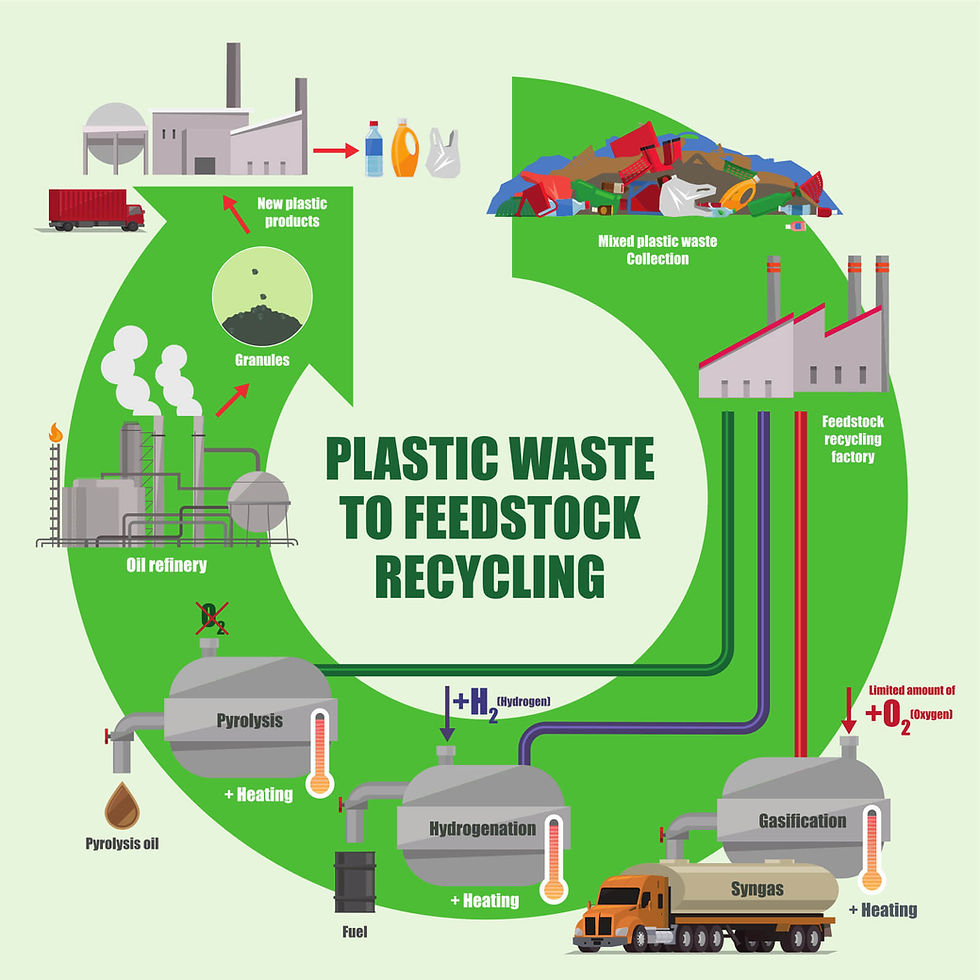Advanced Hydrotreating & MaxFlux: Unlocking Clean Hydrocarbons from Pyrolysis Oil
- cemnar0
- Jul 17
- 2 min read

Introduction
Pyrolysis oils distilled from mixed plastic waste offer a potential goldmine for circularity, but only if they are upgraded to meet the stringent purity demands of modern chemical plants and refineries. This essential upgrade step hydrotreating is delivered at its most effective by Sulzer’s advanced MaxFlux technology.
Why Hydrotreat Pyrolysis Oil?
Unpurified pyrolysis oil contains high levels of sulfur, nitrogen, halogens (like chlorine), oxygenates, and metals.
These impurities pose risks of catalyst poisoning, corrosion, and regulatory non-compliance in downstream processes.
Only ultra-clean hydrocarbons (<1 ppmw of critical contaminants) are accepted in steam crackers, polymer units, or as chemical feedstock.
How MaxFlux Hydrotreating Outperforms
Key Process Features
High Liquid Flux Design:Unlike trickle-bed reactors, MaxFlux® dissolves hydrogen directly in the liquid phase, eliminating the need for a large hydrogen gas recycle loop. This means:
Enhanced impurity removal
Lower energy use
Simplified unit design and integration
Superior Mixing & Temperature Control:Hydrodynamic internals ensure efficient hydrogen/feed mixing, distributing flow across the catalyst bed and stabilizing temperatures. This:
Prevents hot spots (exotherms)
Minimizes over-cracking and unwanted side reactions
Extended Catalyst Life:Maximized contact and lower coking rates mean fewer shutdowns, longer maintenance intervals, and reduced operational costs.
Step-by-Step MaxFlux Process
Feed Preparation:Pyrolysis oil is passed through adsorbent and guard beds to trap harmful trace elements and protect main catalysts.
Hydrotreating Reactor:Hydrogen is intimately mixed with the oil; contaminants (S, Cl, N, O, metals) are converted and removed across one or more catalyst beds. Temperature is regulated for stability.
Product Separation:Cleaned oil is separated from off-gases and byproducts in strippers or fractionators; streams like naphtha are drawn off, ready for chemical industry use.
Recycling as Needed:Effluent can be partially recycled for optimized yield and process efficiency.
Table: MaxFlux vs. Conventional Hydrotreating
Feature | MaxFlux | Conventional Trickle-Bed |
Hydrogen utilization | Dissolved in liquid (no recycle loop) | Gas phase with recycle loop |
Impurity removal | <1 ppmw S, N, Cl, O, metals | Typically higher |
Energy & OPEX | Lower—no large recycle compressors | Higher—compressors required |
Catalyst life | Longer, less coking & better thermal control | Shorter, more frequent coking |
Integration | Modular, flexible for retrofits or new plants | Complex, less flexible |
Why Sulzer for Your Pyrolysis Oil Upgrade?
Lowest CAPEX and OPEX:
Efficient operation, fewer moving parts, and minimal required utilities.
Proven Technology:
Operating at major plants integrating plastics recycling into mainstream refineries and chemical value chains.
Modular Engineering:
Fast installation, easy expansion, and adaptation to both greenfield and brownfield sites.
Conclusion
Sulzer’s MaxFlux hydrotreating is at the heart of converting contaminated pyrolysis oil into specification-grade hydrocarbons making the circular plastics economy not just possible, but practical and profitable. By efficiently removing all key contaminants and protecting catalyst life, Sulzer empowers recyclers and producers to meet both economic and environmental targets.



